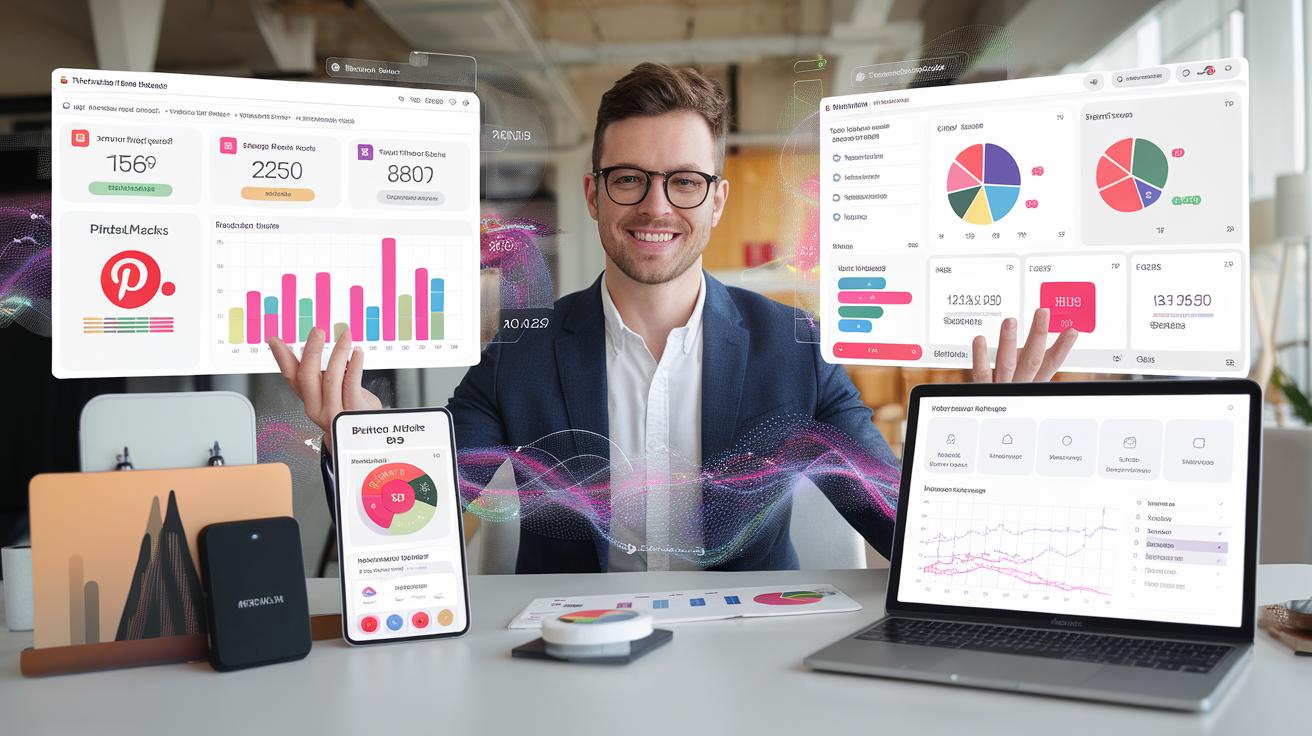Introduction
Leveraging a robust content strategy is essential for enhancing Pinterest marketing results. Pinterest, with its unique platform focused on discovery and sharing, offers businesses a tremendous opportunity to reach potential customers. By understanding the mechanics of content strategy, marketers can craft engaging, visually appealing content tailored to their target audience. This article delves into the intricacies of content strategy, providing insights on how to align your Pinterest marketing efforts for maximum engagement and conversion.
This exploration begins with the fundamental principles of a content strategy, highlighting how it can guide content creation, publication, and governance. It emphasizes the importance of clear definitions and actionable goals that can support effective marketing on Pinterest. By integrating content strategy into Pinterest marketing, businesses can create an effective roadmap that not only engages users but also drives sustainable traffic and builds a loyal customer base.
Understanding Content Strategy in Digital Marketing
Defining Content Strategy and Its Role
Content strategy in digital marketing is a comprehensive plan that outlines the creation, publication, and governance of useful, usable content. The aim is to meet specific business goals while providing value to the audience. At its core, content strategy serves as a roadmap, guiding marketers in their decision-making processes regarding which content to produce, how to deliver it, and where to distribute it. By systematically assessing the needs of the target audience, content strategy ensures that all marketing assets align with broader business objectives.
The Importance of Content Strategy
In an era where consumers are bombarded with information, having a well-defined content strategy is not just beneficial; it is necessary for standing out. A thoughtful content strategy helps brands understand their audience intimately, enabling tailored content that resonates on a personal level. Effective strategies address several key components:
- Audience Analysis: Understanding demographics, interests, and behaviors enables the creation of content that connects with the target market.
- Content Types: Identifying various content formats—such as blogs, videos, infographics, and social media posts—adds richness and variety to the overall marketing efforts.
- Distribution Channels: Knowing where the audience consumes content allows brands to strategically allocate resources and amplify reach.
- Performance Metrics: Establishing KPIs (Key Performance Indicators) helps in understanding what works and what needs adjustment for ongoing improvement.
The planning phase should encompass keyword strategy, content calendar development, and engagement strategies—ensuring that each piece of content aligns with the brand’s voice and values. In managing content, it becomes essential to stay agile; trends change rapidly in digital environments, requiring marketers to adapt their tactics without compromising the message.
A robust content strategy serves as a framework for consistent messaging. It equips teams with guidelines that help maintain quality and coherence across different platforms, which is particularly important for building brand loyalty and trust. Essentially, a well-executed content strategy not only amplifies marketing effectiveness but also enhances overall customer experiences, making it an invaluable component of any successful digital marketing initiative.
Pinterest as a Marketing Tool
Understanding Pinterest’s Unique Features
Pinterest stands out in the social media landscape as a unique platform designed for discovery and inspiration. Unlike traditional social networks that focus on direct social interaction, Pinterest operates primarily as a visual search engine, allowing users to explore a vast array of topics through curated images known as Pins. This focus on visually engaging content serves as an effective marketing tool by connecting brands directly with users who exhibit intent and interest.
One of Pinterest’s defining features is its ability to function as a bookmarking tool. Users can save ideas, products, and content to specific boards, creating organized collections based on their interests. This means that brands have the potential to reach a highly targeted audience actively seeking content within their niche. By crafting visually appealing and relevant Pins, businesses can make a memorable impression that encourages users to revisit their profiles or websites for further engagement.
Another distinctive aspect of Pinterest is its search functionality. Users can search for specific topics, products, or styles, and the platform’s algorithm optimizes results based on personal preferences and past behaviors. This presents a golden opportunity for marketers to enhance discoverability through well-thought-out keywords in Pin descriptions and boards. The proper use of SEO strategies can amplify their visibility within searches, thus driving organic traffic to their content.
The Power of Visual Content and User Intent
The emphasis on visual content makes Pinterest an ideal platform for marketers looking to convey messages quickly and effectively. High-quality images resonate well with Pinterest users, often translating to more significant engagement rates. Visual storytelling can evoke emotions, inspire actions, and connect with audiences at a deeper level, ultimately guiding them toward conversion.
Pinterest users often leans toward discovering new ideas and planning, which aligns seamlessly with marketing objectives. Many users utilize Pinterest to create “dream boards,” seek inspiration for personal projects, or plan future purchases. Understanding this user behavior can help marketers develop content strategies that directly address these motivations. By providing valuable, visually engaging content that answers their questions or fulfills their aspirations, brands can enhance their marketing effectiveness on this platform.
Creating Engaging Pins Content Strategy Secrets to Boost Your Pinterest Marketing Results
Understanding the Essentials of Engaging Pins
Effective pins act as the heart of a successful Pinterest marketing strategy; they are visual gateways that invite users to explore your brand further. When crafting pins, it is paramount to adhere to best practices that will not only capture attention but also foster a connection with users. The first step in this process is understanding your audience. Knowing their interests, preferences, and pain points will guide the visual and textual elements of your pins.
High-quality images are non-negotiable. Vertical images, ideally with a 2:3 aspect ratio, perform best, as they occupy more screen space on mobile devices. Each image should be crisp, vibrant, and tell a story that aligns with your brand. Consider using tools like Canva or Adobe Spark to design images that are professional yet visually appealing. Adding overlays of text can help clarify the message, but ensure the font is large enough to read on smaller screens.
Best Practices for Creating Eye-Catching Pins
Beyond basic aesthetics, several best practices can further enhance the impact of your pins. First, utilize consistent branding elements. Incorporate your brand colors and logos subtly in a way that does not detract from the main focus of the pin. This reinforces brand identity and fosters trust among users.
Call-to-action (CTA) elements are vital for encouraging interaction. Phrases like “Learn More,” “Check It Out,” and “Get Inspired” can effectively prompt users to take the next step. Place these CTAs strategically within your pin designs to draw the eye while ensuring clarity in their purpose.
Consider A/B testing your pins to determine which designs resonate best. Variations in color schemes, fonts, or imagery can yield valuable insights on user preferences. Furthermore, analyzing pin engagement through Pinterest Analytics will provide data to refine your strategy over time.
Utilizing keywords within pin descriptions not only enhances searchability but also helps to position your content within relevant niches. Be specific yet concise; compelling descriptions paired with relevant hashtags can increase visibility, driving more traffic to your profile and linked content.
Aligning Content Strategy with Business Goals Enhancing Pinterest Marketing Effectiveness
Understanding Business Objectives
To maximize the impact of your Pinterest marketing, it’s vital to anchor your content strategy in the core objectives of your business. Begin by clearly defining what your organization aims to achieve. Whether it’s boosting brand awareness, increasing customer engagement, driving traffic to your website, or converting leads into sales, these objectives will serve as the guiding principles for your content plan on Pinterest. This alignment ensures that your efforts resonate with your audience and reflect your brand’s purpose.
Mapping Content to Objectives
Once your business goals are established, the next step is to create a content mapping system that links each type of Pinterest content to specific goals. For instance:
- If your goal is to enhance brand visibility, focus on producing visually captivating pins that highlight your brand story or mission.
- For increasing website traffic, pin blog posts, guides, or resources that provide valuable information to users while enticing them to click through.
- To drive conversions, develop pins that feature product promotions, offers, or user testimonials that showcase the benefits of your offerings.
This deliberate mapping ensures that every piece of content serves a purpose in advancing your core business objectives.
Utilizing Analytics for Continuous Improvement
Regular analysis of your Pinterest performance metrics can reveal how well your content strategy aligns with your objectives. Utilize Pinterest analytics to monitor engagement rates, click-through rates, and conversion statistics. This information will provide insights into which content types and themes resonate most with your audience. Based on this data, refine your content strategy by amplifying successful pins and reconsidering those that underperform.
Consistency Across Platforms
For a cohesive brand presence, ensure that your Pinterest strategy aligns not only with your business goals but also with your broader marketing efforts across other platforms. Cross-promotion and consistent messaging can enhance brand recognition and foster trust among your audience. Tailor your content to fit the unique characteristics of Pinterest, while maintaining the essence of your overall marketing strategy.
By strategically aligning your Pinterest content with your business goals, you can create a focused approach that not only engages users but drives significant results for your business.
Utilizing SEO in Pinterest Marketing Integrating Best Practices for Enhanced Visibility
Leveraging Keywords for Maximized Reach
To fully harness the potential of Pinterest for marketing, integrating effective Search Engine Optimization (SEO) strategies is fundamental. The platform operates similarly to search engines, with users actively seeking inspiration and information using specific keywords. Therefore, identifying and incorporating relevant keywords in your pin descriptions, board titles, and profile information is pivotal. Using keyword research tools can help pinpoint the phrases and terms that resonate within your target audience.
Strategically placed keywords enhance your content’s discoverability in search results. Including them in your pin descriptions and titles ensures that your posts reach the appropriate audience, significantly increasing engagement. It is advisable to create a keyword-rich description that is still engaging and informative, as this approach caters to both users and search algorithms. The balance of compelling language and SEO best practices can lead to a broader audience and elevated traffic to your website.
Utilizing Rich Pins for Enhanced Engagement
Rich Pins are enhanced versions of standard pins that provide additional context about an idea, article, or product. By including crucial information directly on the pin, such as real-time pricing, availability, or enhanced descriptions, Rich Pins can significantly boost engagement rates. This additional layer of context not only appeals to Pinterest’s algorithms but also delivers an enriched user experience, encouraging users to interact more with your content.
To take advantage of Rich Pins, ensure you have the necessary metadata on your website. This information is essential for Pinterest to pull in relevant data, effectively making your pins stand out among the vast array of content on the platform. Rich Pins can be particularly beneficial for brands in industries such as e-commerce and publishing, where details and context can drive higher conversions.
Visual appeal also plays a significant role in SEO success on Pinterest. High-quality images, vertical formats, and captivating graphics can improve click-through rates and pin engagement. Complementing these visuals with optimized text descriptions enhances your visibility further. Following Pinterest’s best practices, such as keeping your pin designs consistent with your branding, helps in creating a recognizable presence that aligns with effective SEO strategies.
By creating a seamless integration of SEO practices into your Pinterest marketing not only drives more traffic but also fosters a deeper connection with your audience. As your strategy grows with data-driven insights, continue to adapt and refine these practices to ensure ongoing success.
Analyzing Success and Iterating Your Strategy The Key to Pinterest Marketing Outcomes
Understanding the Importance of Analysis
To truly harness the potential of Pinterest for your marketing campaigns, it’s vital to implement a structured approach to analyzing your content strategy. This process involves assessing key performance indicators (KPIs) such as engagement rates, click-through rates, and follower growth. Each of these metrics provides valuable insights into how effectively your content resonates with your target audience. By continuously monitoring these KPIs, brands can detect trends and patterns that delineate the strengths and weaknesses of their campaigns.
The impact of content strategy on Pinterest marketing outcomes can be profound. For instance, if certain images or video pins are consistently more engaging than others, analyzing the specifics of those successful posts—such as design elements, descriptions, and timing—can illuminate best practices that can be replicated in future content. A weighted approach allows marketers to prioritize what works, effectively honing in on the elements that contribute to growth and engagement.
Iterating Based on Insightful Data
After the analysis phase, the next step is to iterate on your strategy. This means making informed adjustments based on your findings. For example, if you observe that certain themes or styles yield higher interaction rates, enhance your content creation around those insights. Adjust your imagery, message, or even pinning schedule according to what the data suggests. Additionally, running A/B tests can provide deeper insights into what variations of your content perform better.
Involving your audience in the iterative process can create a cycle of continuous improvement. Encourage feedback through comments and direct messages to learn more about their preferences and interests. This type of audience engagement not only builds community but also enables you to craft tailored content that speaks directly to those who follow your boards.
Monitoring the competitive landscape can also provide valuable context. Analyzing what similar brands in your niche are doing effectively can help you stay on-trend and inspire new ideas for your own campaigns. It is crucial to maintain an agile mindset, ready to pivot and adapt strategies based on real-time feedback and emerging trends within the Pinterest ecosystem.
Conclusions
A well-defined content strategy is a vital component of effective Pinterest marketing. By aligning your content efforts with strategic planning, businesses can reach and engage their target audiences more efficiently. Understanding the nuances of content strategy allows marketers to shape their messaging and repurpose content across channels, ultimately driving better results on Pinterest.
As this article has outlined, the secrets to boosting Pinterest marketing results lie within the depth of a tailored content strategy. By applying these principles, businesses can ensure their Pinterest presence not only captures attention but also fosters interaction, leading to increased brand loyalty and conversions. The future of marketing on Pinterest is bright for those who embrace these strategies and remain committed to creating meaningful content.
















